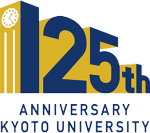Late Pliocene rodents from the Irrawaddy sediments of central Myanmar and their palaeogeographical significance西岡佑一郎・高井正成・西村剛・タウンタイ・ジンマウンマウンティン・江木直子・鍔本武久・マウンマウン ミャンマー中部グウェビン地域のイラワジ層(後期鮮新世,約300万年前の堆積物)からは,オナガザル科のハヌマンラングール類(Semnopithecus)をはじめ,多様な哺乳類化石が見つかっている.本研究では,これまでに産出した齧歯類化石群集を古生物学的に分析し,新種を含む9種の齧歯類を記載分類した.ミャンマーからの小型齧歯類化石の発見は本研究が初めての報告となるが,これまでにネズミ科4種,ヤマアラシ科3種,タケネズミ科1種,リス科1種が見つかっている.この齧歯類化石群集は現在東南アジア大陸部に生息する現生種の初期グループであると推察され,インドや中国の群集とは明らかに異なることから,東南アジアの動物地理区(インドシナ区)がすでに形成されていたことを示した. 参照ページ
http://chicchaimon.blog.fc2.com/blog-entry-3.html Journal of Systematic Palaeontology, 2014年,
doi:http://dx.doi.org/10.1080/14772019.2014.909537 The Upper Pliocene Irrawaddy sediments in the Gwebin area of central Myanmar recently yielded a rodent assemblage that contains nine species belonging to four families: four species of Muridae, three of Hystricidae, one of Spalacidae, and one of Sciuridae. The murids consist of
Hapalomys cf. longicaudatus, Maxomys pliosurifer sp.
nov., Rattus jaegeri and cf. Rattus sp. indet., which include both extinct and extant forms.
Maxomys pliosurifer is relatively similar to Maxomys surifer that lives in South-East Asia in terms of tooth morphology but retains plesiomorphic features shared with the ancestral rat,
Karnimata, and possible sister genera of
Maxomys, such as Ratchaburimys and Millardia. The three hystricids belong to the genus
Hystrix and consist of two extinct brachydont species
(Hystrix paukensis and Hystrix sp. indet.) and one hypsodont species similar to living form
(Hystrix cf. brachyura). This finding indicates that primitive brachydont species and derived hypsodont species of
Hystrix had likely coexisted in the locality, but the brachydont species are significantly more common amongst specimens collected from the Gwebin area. The spalacid species is
Cannomys cf. badius and the sciurid species is Menetes sp. indet. These two rodents are similar to living species in continental South-East Asia although they show minor differences in tooth characteristics compared to the living forms. Some species and genera of the fossil rodent assemblage from the Gwebin area also occur in Upper Pliocene localities of Thailand, suggesting chronological correlation between these two faunas. Moreover, these fossil rodent assemblages are composed primarily of the species distributed endemically in continental South-East Asia. Late Pliocene rodents of continental South-East Asia were affected by river barriers that formed during the Mio-Pliocene, and they were probably not able to disperse from South-East Asia into South and East Asia. MAY/23/2014
Copyright(C) 2014 PRI ( ). ).
| 






